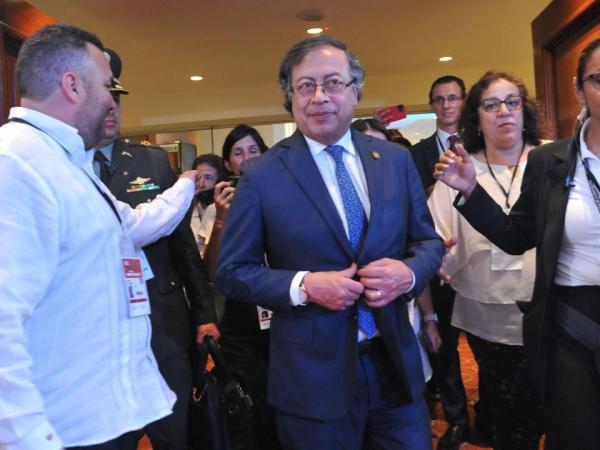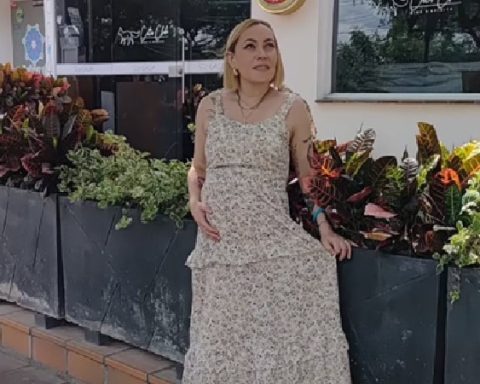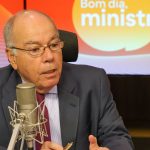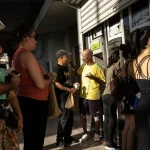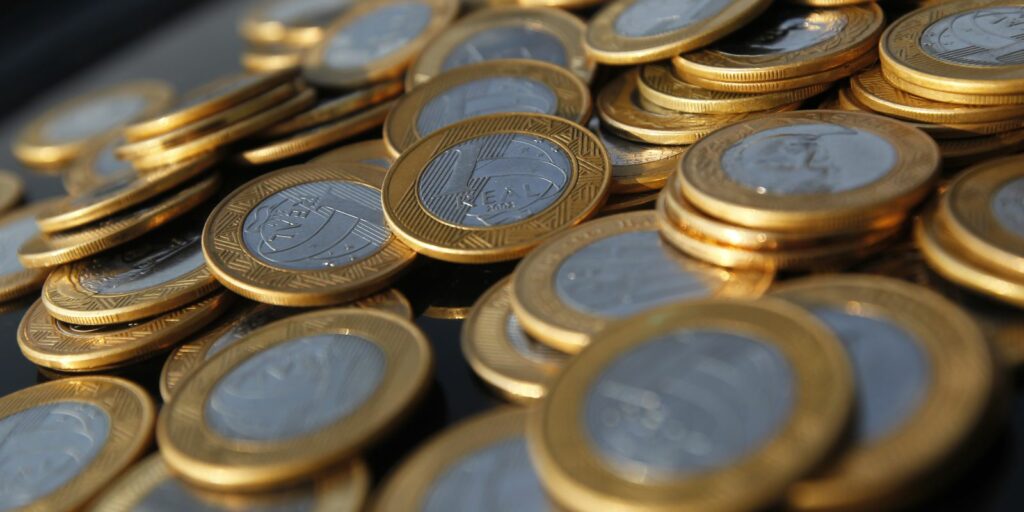The favorable image of President Gustavo Petro went from 54 to 44% between October and February, as shown on Monday morning by the results of the Pulso País survey, from the Datexco firm, revealed by W Radio.
(Read: The gross debt of the National Government closed 2022 at 64.1% of GDP).
To the question of “Do you approve or disapprove of the way President Gustavo Petro is running the country?“, the people who indicated approval went from 48 to 39%.
In specific topics, in which those surveyed indicate whether things have improved or worsened, in terms of security, for the February measurement, 12% believe that they have improved, another 50.17% of those consulted indicated that they “got worse”while 36.32% believed that they remain the same.
And to the question “In general, the economic situation of you and your family tends to improve, worsen or stay the same?”, 48.87% believe that it remains the same16.1% indicated that it has improved, while another 34% consider that it has worsened.
(Also: Petro denies that his position on the Metro is blackmail.)
On the other hand, the ministers of President Gustavo Petro are not doing well in their management, according to the Colombians. In a On a scale of 1 to 5, the highest rating was obtained by Cecilia López, from Agriculture; Alejandro Gaviria, from Education, and María Isabel Urritia, from Sports, with 2.5.
While the lowest rating was for Irene Vélez, Minister of Mines and Energy, who was rated 2.1, says the survey.
Name of the research project: Pulso País Colombia.
Legal entity that carried out the survey: Datexco Company S .A. OPINOMETER ®
Natural or legal person who entrusted it: W Radio.
Funding source: W Radio.
Target group: men and women over 18 years of age in all socioeconomic levels, with coverage of municipal capitals in the study scope regions.
Collection technique: personal survey through telephone line to fixed line telephone number in homes. Supported in Computer Assisted Telephone Interview (Cati) system.
Population universe and geographic scope: group of households with a fixed telephone line in the municipal capitals in the following Colombian departments: Bogotá, DC, Atlántico, Bolívar, Cesar, Córdoba, La Guajira, Magdalena, Sucre, Antioquia, Caldas, Caquetá, Huila , Putumayo, Quindío, Risaralda, Tolima, Arauca, Boyacá, Casanare, Cundinamarca, Meta, Norte de Santander, Santander, Cauca, Chocó, Nariño and Valle del Cauca. Grouped into 5 regions as follows: Bogota Region, Caribbean Region, Central Region, Eastern Region and Pacific Region.
Type of sample / sampling: probabilistic, stratified and multistage sampling. Forced inclusion of 20 department capitals and 4 large municipalities that make up the metropolitan area of some of the capital cities; in total, 24 large municipalities were forcibly included. A group of 6 medium and small municipalities was also included to represent the rest of the Colombian territory. In the second stage it is a simple random sample of telephone series and then a random dialing to fixed lines.
Procedure used for the selection of the sample units:
random selection of telephone numbers on RDD (Random Digital Dialing) telephone series in the cities and regions covered by the study. Once the household has been contacted, the person of legal age who lives in the household closest to the birthday that is in the household is inquired about.
Sampling frame: database of the telephone series of the selected cities within the regions covered by the study.
Sample size and distribution: A total of 900 effective surveys were carried out, distributed according to the ‘Sample distribution’. * Detail ahead
Margin of error and reliability (precision): a relative standard error margin is observed for the total estimation sample of 3.3% for proportions with a phenomenon of occurrence greater than 50% and with a confidence level of 95%.
Quality control: criticism of 100% of the surveys carried out and supervision of 10% of the surveys carried out.
Topics of study, characters and entities that were investigated: perception of the political and economic situation of the country. Perception of the government and its cabinet. Perception of characters, institutions and entities and mayoralties. Also the opinion on the peace process, corruption and other current issues.
Research objective:
Investigate public opinion on different current national issues. Management and approval of the Government, ministerial cabinet, entities, characters and political and social positions on various issues.
* Distribution of the sample: a total of 900 surveys were carried out distributed throughout the national geography with coverage by region and municipalities classified in three (3) different sizes. This division of the Colombian territory suggests the creation of groups or statistical strata of households with cultural conditions and economic and social development similar within the strata and different between strata, which from the statistical point of view contributes to the reduction of variance of the estimator of the population attribute to be studied.
The five geographical regions formed are: Bogotá, Caribbean, Central, Eastern and Pacific, as illustrated by the following map. Departments are included within the regions and within these the three sizes of municipalities that were defined according to their population size and their departmental representativeness; the capital cities of the department and some municipalities in its metropolitan area made up the group of large municipalities, the remaining municipalities with at least 30,000 inhabitants belong to the group of medium-sized municipalities, and the municipalities with a population between 5,000 and 30,000 inhabitants are part of the group of municipalities. little ones.
The population concentration in Colombia is high, in a few municipalities it is evident that only 38 large municipalities (that is, 4% of the total municipalities in the country) group 53% of the population studied, while 96% of the remaining municipalities (888 municipalities) groups 47% of the population, which suggests necessarily including the vast majority of large municipalities in the sample. Colombia is made up of few large urban centers and a large group of small municipalities with little population.
BRIEFCASE
